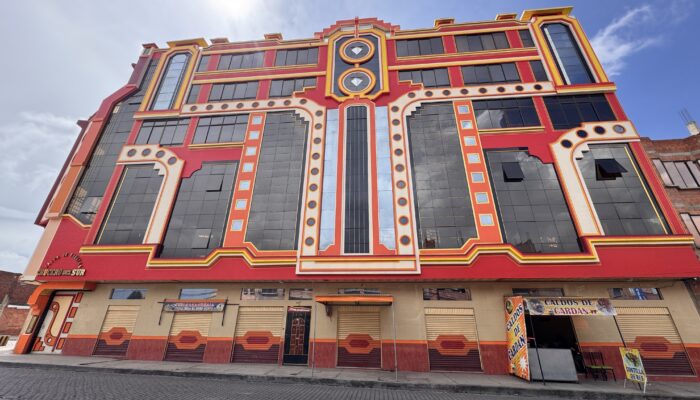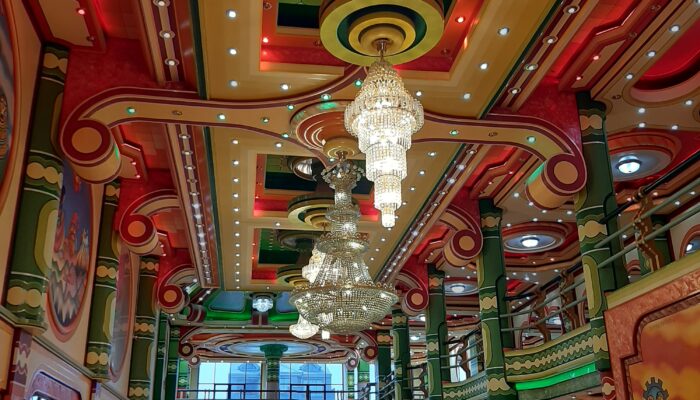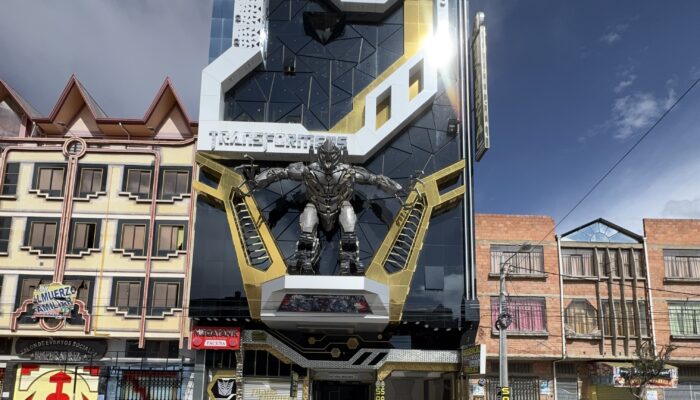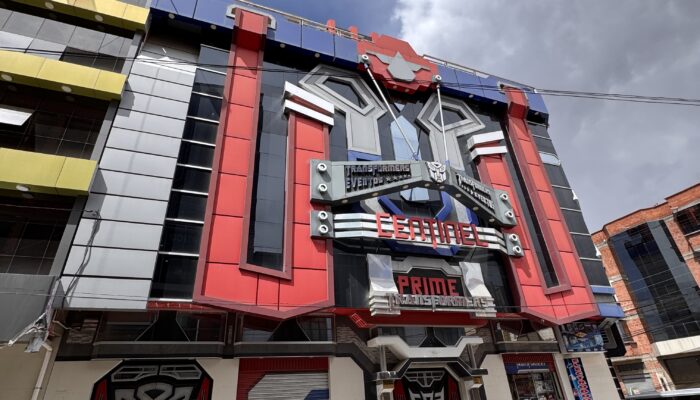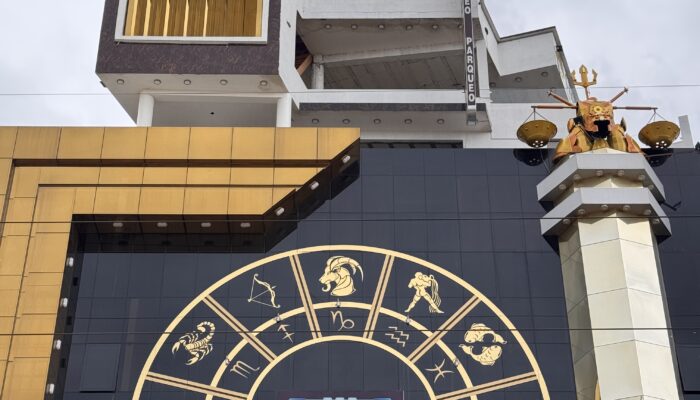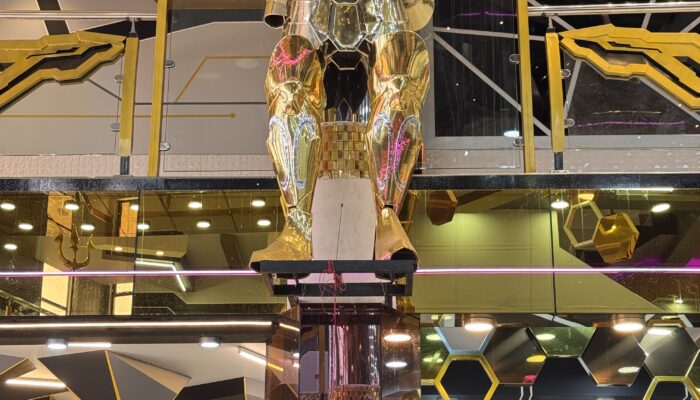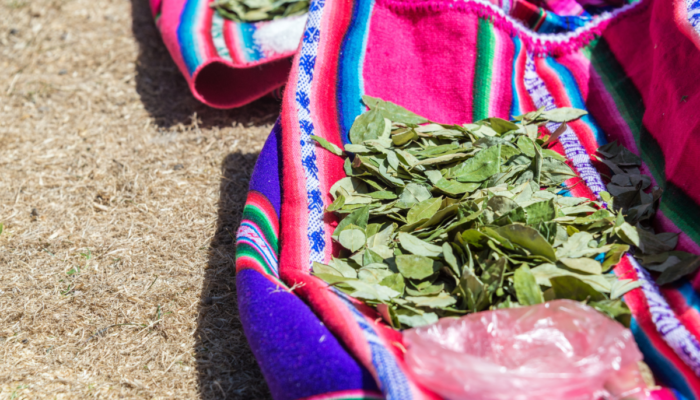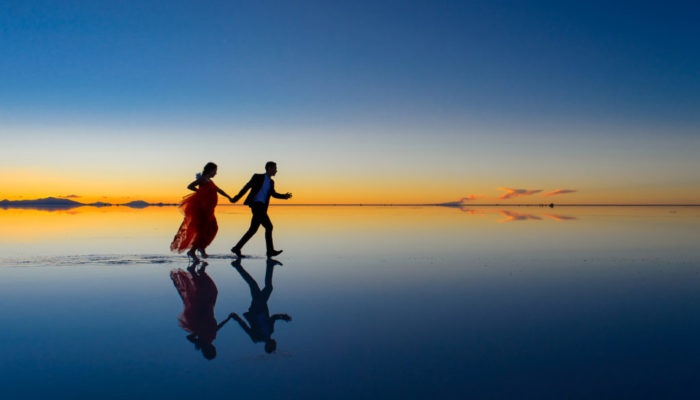A pinch of the ancient, a cloud of the futuristic and, above all, a good dose of madness, mix it all together and you get… a Cholet! This multi-purpose building is growing like a mushroom in the heights of El Alto, in the department of La Paz, Bolivia. In the space of just a few years, numerous works of art have already seen the light of day.
Underneath its modern appearance, the Cholet illustrates the country’s ancestral identity. This extravagant architecture is the brainchild of designer Freddy Mamani, to whom we are dedicating a colorful article during this beautiful month of July.
Between luxury, kitsch and psychedelia, Thaki Voyage takes you on a tour of Andean mini-mansions, where the limits of the imagination and finance don’t exist. From pink and yellow to blue and green, you’re in for a treat!
Redefining El Alto's new bourgeois identity
Today, El Alto is decked out in color and glitz to welcome the territory’s new millionaires. However, this former suburb, once considered La Paz’s poor little sister, has suffered many downgrades compared to its big sister. Situated at an altitude of over 4,000 metres, it has been possible to discover the city by cable car from the center of the Bolivian capital since 2014.
The municipality of El Alto is 80% Aymara, who are keen to preserve their rural traditions in the urban landscape. In recent years, some members of this community have become increasingly wealthy. So, in a bid to flaunt their success, El Alto’s nouveau riche are choosing the city’s facades to illustrate their economic power, giving the city’s heights a new, contrasting identity.
The colorful, oversized buildings known as Cholets are a sign of the country’s growing and excessive wealth. These houses are also the object of a veritable competition between their owners, all wishing to own the most beautiful residence in the neighborhood. As a result, no two Cholets are alike: each one is unique and personalized.
Le Cholet or the architectural battle against the disappearance of Bolivian roots
Cholets are the envy of their South American neighbors, but you’ll have to go to El Alto, the cradle of mutation, to admire them. Part of the new “neo-Andine” trend, these gigantic houses are a purely Bolivian architectural expression designed to enhance and preserve the country’s culture.
Freddy Mamani, a pioneer of this movement and a native of El Alto, is the man behind these eye-catching works. The engineer wanted to break with the rules taught in architecture schools, going beyond the limits imposed by the Western, neo-colonial configuration. To achieve this, he drew inspiration from Andean architecture, more specifically the geometric shapes of the remains of the Tiwanaku civilization (see our article on this subject) and the multiplicity of textile colors found in the Altiplano, to create a style that is instantly recognizable.
Mamani builds the future from the past, which is why he recovers the iconography of Tiwanaku culture, which he considers to be the essence of his work, and incorporates the colors of traditional Bolivian textiles, notably those worn by the Cholitas. This fusion in his work is also reflected in the word Cholet, a contraction of Cholo (mestizo world) and Chalet (Swiss house). Although she doesn’t like the term, Mamani has made a name for herself by fusing the geometry and colors of Bolivia’s ancestral culture with a clean sweep of its architectural past.
Numbers and Cholets... it all adds up!
While the facades of the Cholets break with the classical rules of composition, so does the function of the building. The Cholet is built on several floors, each with a distinct function. Generally speaking, the first floor consists of stores, while the first floor is occupied by a party room, which can also be rented out for weddings. On the second floor, you’ll find the creative salon, while the other floors are home to several apartments. The top floor is where the owner lives. Some Cholets also house restaurants and hotels with viewpoints.
These spaces generate a real economic and tourist contribution, as they attract so much attention. It’s a substantial contribution for the municipality, which has succeeded in giving life and color to this arid city, which deserves to be discovered. Thaki Voyage takes this opportunity to inform you that we offer visits to El Alto and, of course, the Cholets! In our company, take the time to admire the moldings, the design, the decoration, but also to understand the complexity of this artisanal work. It can take more than six years to build one piece.
At present, Bolivia has over 350 Cholets either completed or under construction. Numerous engineers have imitated Mamani’s design, helping to make the city surreal. Among the most fascinating creations are the Cholets inspired by Marvel Cosmics, such as the Cholet Ironman or the Cholet Transformers. You can also catch a glimpse of Lionel Messi’s Cholet or the Statue of Liberty’s Cholet. Another must-see is the Cholet El crucero de los Andes, which social networks have dubbed the Titanic. As you’d expect, each of these palaces has its own theme.
Freddy Mamani’s unusual architecture is a firework display in the El Alto landscape, which is becoming more and more ornate by the day. As these imposing houses are created, several stories are woven together, including that of a country between its past and its future. The two are linked by the present, so it’s the perfect time to pay us a visit.
Thaki Voyage looks forward to welcoming you and participating in the worldwide expansion of the “neo-Andin” trend. Don’t hesitate to contact us to plan your adventure in Bolivia, discovering the atypical Cholets!
Article by Mathilde Leroux

